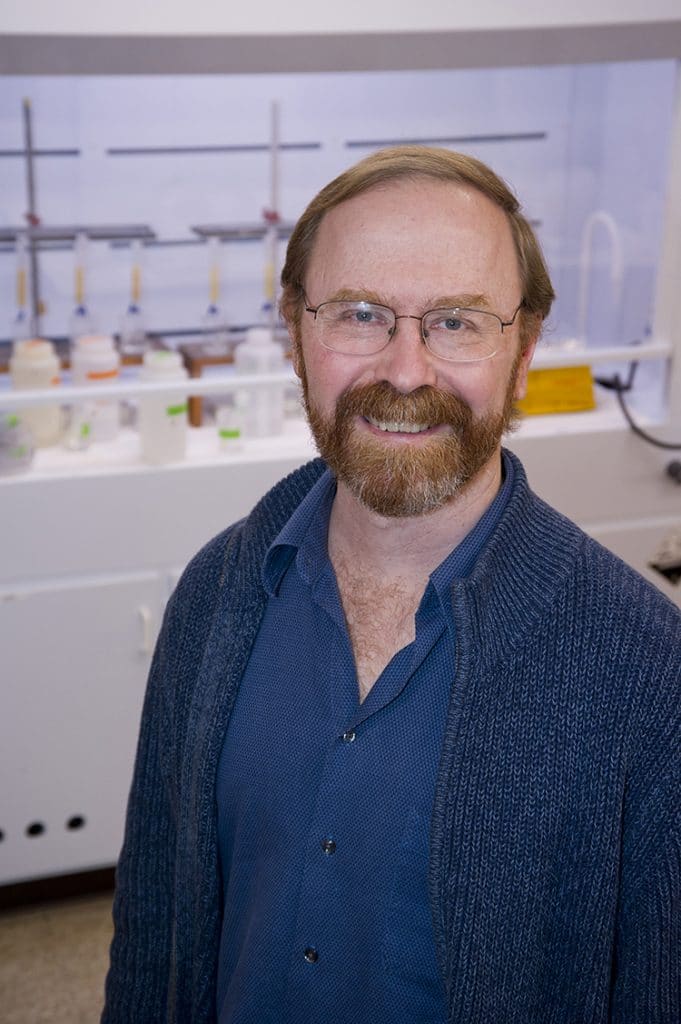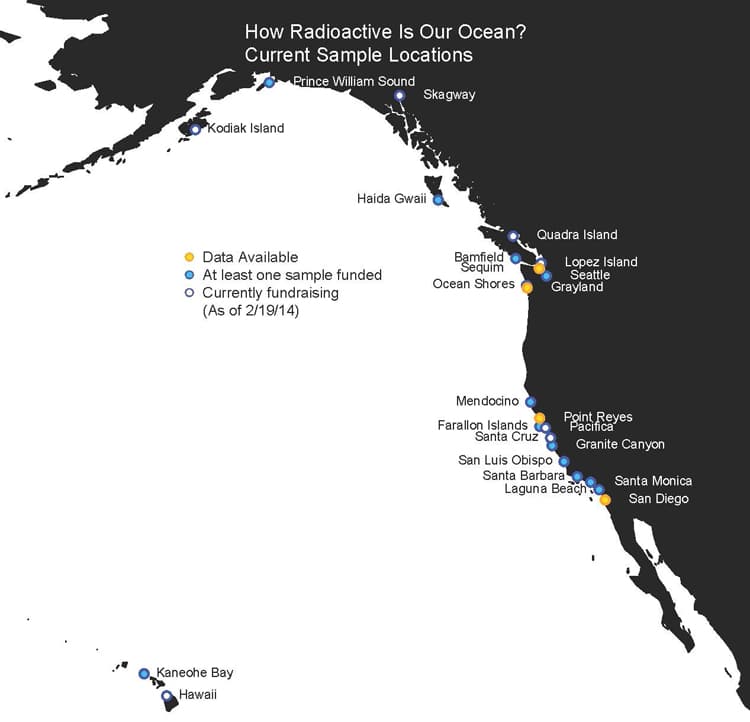Radioactive Ocean Website Garners Public Support
February 24, 2014
Woods Hole Oceanographic Institution (WHOI) has teamed up with the public to build the most comprehensive and up-to-date dataset on marine radiation levels in the aftermath of the 2011 Fukushima Dai-ichi Nuclear Power Plant disaster. With no U.S. government or international plan to monitor the radiation levels in the ocean since the disaster, WHOI marine chemist Ken Buesseler launched a crowdsourcing campaign and citizen science website to include and empower the public. He is posting all of the current radiation level data online.
“Whether you agree with predictions that levels of radiation along the Pacific Coast of North America will be too low to be of human health concern or to impact fisheries and marine life, we can all agree that radiation should be monitored, and we are asking for your help to make that happen,” said Ken Buesseler, WHOI senior scientist and director of the Center for Marine and Environmental Radioactivity (CMER).
Launched in January, the crowdsourcing campaign has received over 160 individual donations totaling about $24,000. The public has responded by sponsoring and raising funds to cover the cost of the on-going collection of seawater samples at 24 locations along the Pacific Coast from Alaska to Canada, down the West Coast of the U.S. and out to the Hawaiian islands. The samples are shipped to the CMER lab in Woods Hole, Mass., for analysis and the information is posted online.
Although Buesseler does not expect levels to be high enough in the ocean or in seafood to be of concern for human health as the plume spreads 5,000 miles across the Pacific, he believes the situation demands careful, consistent monitoring.
“What we really need is support to sample the same sites multiple times over the next couple of years in order to fully monitor the plume’s arrival and movement over time,” said Buesseler about building a complete dataset of information.
No traces of Fukushima’s cesium-134 have been detected in Buesseler’s analyses yet. And, the level of cesium-137 is what’s expected from the 1960s sources (1.5-2 Bequerels per cubic meter).
According to scientific models, the plume of radiation from the Fukushima Dai-ichi nuclear power plant is forecasted to be detectable along the Pacific Coast in April 2014. Traces of Fukushima’s radiation are predicted to reach Alaska and coastal Canada first because of the trajectory of the powerful Kuroshio Current that flows from Japan across the Pacific. The plume will continue to circulate down the coast of North America and back towards Hawaii.
Science Made Public
Buesseler was motivated to launch this program to empower the public with real scientific data.
“The unknown can breed fear. But in this case, science can give us the information we all need in order to make informed decisions,” he said.
The website, ourradioactiveocean.org, contains educational information about radiation in the ocean and impacts on human health. The website has garnered more than 41,000 visits to-date.
Through the website, the public can support the monitoring of radiation in the ocean with tax-deductible donations to fund the on-going radioisotope analysis in the Pacific Ocean.
“We already have dozens of seawater samples from the coast of Japan out to the middle of the Pacific, but we need additional samples—from up and down the West Coast of North America and across the Pacific. The trouble is, these samples are expensive to collect and analyze,” Buesseler said.
To propose a new location for seawater sampling, individuals and communities will be asked to donate a minimum of $100 for seed funding. Not every proposed site can be accepted due to limits on analytical time and lab resources, but if selected, WHOI sets up a fundraising webpage to help a group reach their fundraising goal. The collection and analysis of one seawater sample costs between $550 and $600, depending upon location. Once the full amount is raised, the individual will receive a sampling kit to collect 20 liters (about five gallons) of seawater to be shipped back to the CMER lab for analysis.
The data is being posted on the website, ourradioactiveocean.org. Support is needed for CMER’s on-going efforts to train the next generation of radio-marine chemists and to purchase additional cesium gamma detectors, which cost about $75,000 each, and can be given by donating to the capacity building campaign.
Ken Buesseler is a Senior Scientist at the Woods Hole Oceanographic Institution (WHOI) who specializes in the study of natural and man-made radionuclides in the ocean. His work includes studies of fallout from atmospheric nuclear weapons testing, assessments of Chernobyl impacts on the Black Sea, and examination of radionuclide contaminants in the Pacific resulting from the Fukushima nuclear power plants. Dr. Buesseler has served as Chair of the Marine Chemistry and Geochemistry Department at WHOI, as Executive Scientist of the U.S. Joint Global Ocean Fluxes Planning and Data Management Office, and two years as an Associate Program Director at the U.S. National Science Foundation, Chemical Oceanography Program. In 2009, he was elected Fellow of the American Geophysical Union and in 2011 he was noted as the top cited ocean scientist by the Times Higher Education for the decade 2000-2010. He is currently Director of the new Center for Marine and Environmental Radioactivity at WHOI. For more info, visit his lab, Café Thorium.
The Woods Hole Oceanographic Institution is a private, independent organization on Cape Cod, Mass., dedicated to marine research, engineering, and higher education. Established in 1930 on a recommendation from the National Academy of Sciences, its primary mission is to understand the ocean and its interaction with the Earth as a whole, and to communicate a basic understanding of the ocean’s role in the changing global environment. For more information, please visit www.whoi.edu.


